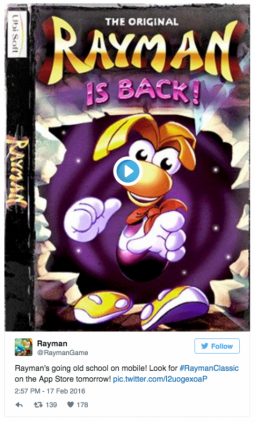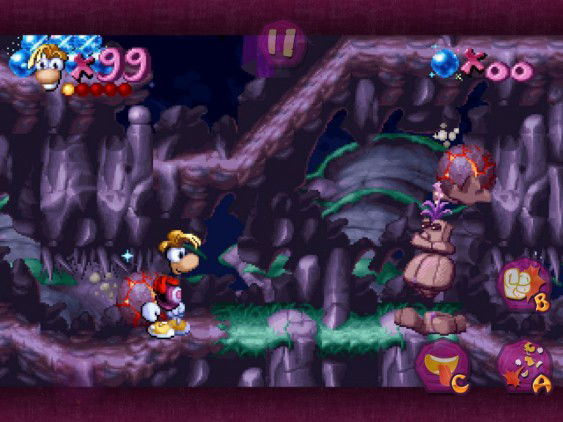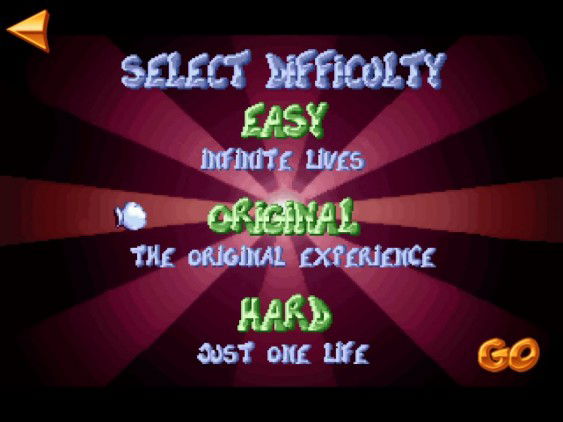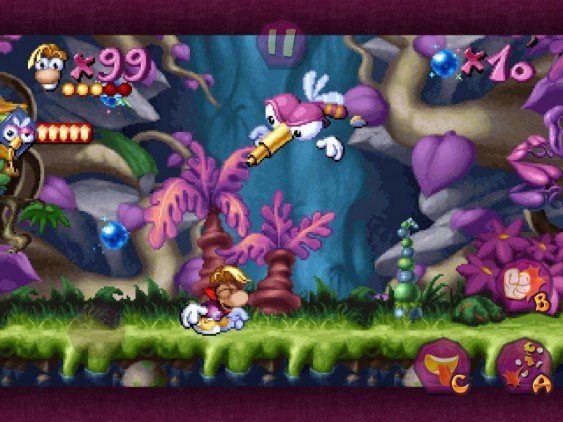A retro classic for a modern audience
It was 1996 and I was four years old when Ubisoft’s spellbinding Rayman landed in my lap as a Christmas present. Rayman was the first game I’d ever played; the fact I’m still interested in gaming to this day is a testament to how central Michel Ancel’s floppy-haired limbless hero was to me growing up. I will always regard the classic Rayman as one of the true greats and while Rayman 2: The Great Escape (and the lesser known Tonic Trouble, while we’re at it) took Ancel’s ideas to daring, three-dimensional places – nothing will ever top that feeling of finally defeating the Space Mama boss after months and months of abject failure.
Name: Rayman Classic
Platform(s): iOS
Publisher(s): Ubisoft
Developer(s): Ubisoft
Genre(s): Adventure/Side-scroller
Release Date: 18.02.2016
Price: $4.99
Review code provided by Ubisoft
Belated Christmas presents like this happen from time to time in the gaming scene – you hear absolutely nothing about anything and then one day, whilst scrolling through Twitter, you happen upon a retweet claiming: “Rayman Classic is coming to the IOS store tomorrow!” Then one night, I take my seat on the tube for my commute home and begin to embark on an adventure I hadn’t set eyes on for twenty years. Suffice to say, I missed my stop.

While the gameplay is rage inducing to adults with its approachable yet ruthless minimalism, the story definitely caters for younger audiences. In Rayman’s world the evil Mr. Dark has defeated the lovely Betilla Fairy, a guardian of the Great Protoon (an orb which brings stability to the universe). To save the world you must take the reigns of the eponymous hero, collecting hundreds of scattered orbs (electoons) whilst defeating several memorable bosses on your zany road trip – ultimately culminating in punching Mr. Dark’s hat off with your boomerang fists.
Rayman on iOS is an official port of the PC iteration of the game, arriving with all the bells and whistles you’ll remember from the first time round – despite lacking the catchy level-concluding jingle of “Yeah! Da da da da da da da da, ha ha ha ha ha ha – ding!” Contrary to popular opinion you can still hear that jingle in jazzed up bursts every time you run out of lives, although a great deal of modern gamers will sideline that possibility in favour of choosing the ‘unlimited lives’ option that has been added to the port retroactively.

The gameplay is wonderfully simple and plays at a much slower pace to some of the newer, more stylised UbiArt titles. The level design is impeccable and I was genuinely surprised to see how much variety was on offer in the early 90’s. Considering the creative restraints of the period, you got a lot of game for your money (although I’m pretty sure something like this used to retail for £10 – and even then we complained it was too expensive!). The game isn’t without noticeable faults; you’ll still be taking blind leaps of faith off-map on the hope that the level will continue below your feet, yet rarely that’s the case. And when you’re not plummeting to your untimely death, there are several cheap ways for you to die – from a blue marching ant knocking you a step backwards into oblivion, or a spiky musical note taking your full health with one misstep. Many will complain about that, I actually find it charming.
The biggest issue I’ve faced with the port is that the iOS controls haven’t advanced in five years. You still move around using your left thumb in the bottom left corner (frustratingly taking up a good 10% of the screen visibility in the process) and you have smaller buttons to hit using your right thumb. Too often would I get to the end of a long and tedious level, only to accidentally pull a silly face at an enemy rather than punch them. One centimetre separates such hugely varied commands and makes for a tense experience that didn’t exist with the PlayStation’s precision controls. I realise there’s generally no way around this, unless Apple start to bundle their new iOS devices with a gamer pad – but I digress.

As a result of unfavourable controls, I can’t give the port as high a score as I’d like. Graphically it looks great (if not a tad down-res’d to cater for the smaller screen) and listening to all the wonderful tunes again is worth the ticket price alone – but after trying to play the game through on the ‘original’ setting I suddenly realized it’s an impossible feat on our touch screen devices. Realistically, the only way to play Rayman is by using the unlimited lives option from the start – which sadly relinquishes any feeling of achievement from the game. Ultimately it’s up to you to decide; this particular port isn’t the best iteration of Rayman there’s been but the game is a solid 10/10 in its own right. Choices, choices…
Summary
Rayman is a 10/10 game that suffers from having a 6/10 port to iOS devices. It’s the full game you’ll remember and cherish from your childhood but with weak controls that lack the precision and dexterity required to play a game like this properly. I can’t really complain though, as a huge fan of the franchise it definitely feels like a belated Christmas gift to me.
-
Gameplay - 9/109/10
-
Visuals - 9/109/10
-
Sound - 10/1010/10
-
Controls - 5/105/10
-
Value - 7/107/10


